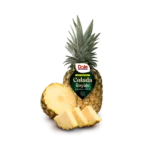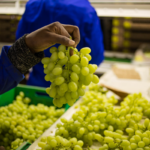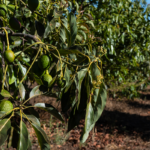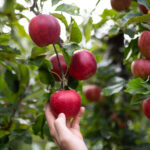Tips for harvesting olive trees

The content of this article 'Tips for harvesting olive trees' was prepared by Amy Grant of Gardening Know How and has been revised and republished by FreshFruitPortal.com.
Harvesting olive trees begins in late August through November depending upon the region, variety, and desired ripeness.
Since olives are picked for both eating and processing into oil, the degree of ripeness matters.
All olives start out green and then gradually become rosy and finally black. Depending upon the type of oil the grower is making, a combination of all three may be used for pressing.
Traditionally, picking olives is done by hand, even in commercial groves. Today, more growers use modern machinery to help them harvest the crop.
At the lowest end of the spectrum, this may only mean using a long handled, vibrating tong to shake the olives from the branches and onto nets spread out under the tree.
A little more high tech method involves tractors drawing shakers behind them or other grape harvesting machinery used in high density orchards.
How to pick olives from the tree
Since it’s unlikely that you own such machinery, harvesting olives at home will have to be done the old fashioned way.
First, you must determine the flavor you desire. The earlier you harvest, the more bitter the taste. As the olives mature, the flavor mellows.
Decide if you are going to press the olives for oil or brine to preserve them. There is a clock going here. You must utilize the olives within three days of harvest. If they sit any longer, the olives will oxidize and “sour.”
So, if you have a lot of olives, you may want to enlist some olive picking friends and allot a whole day. Seduce them into helping to process or brine the olives with a promise of some of the spoils of the day!
Larger olives have more oil, but the oil content drops as the olives ripen. Green olives have a longer shelf life but tend to be bitter and will take several months to mellow in flavor. If picking olives for oil, pick olives with a light yellow color.
First, place tarps under the tree or trees. Using a rake, gently dislodge the olives. Gather the olives from the tarp.
If you are picking for oil, harvest all the olives in this manner and gather up any strays on the ground. Olives left on the ground will rot and can foster disease and olive fruit flies. You may also use a ladder and handpick the olives. While this is more time consuming, it avoids bruising of the fruit.
If you are picking olives to brine, pick green olives when they are mature but before they begin to change color. All olives on the tree will not be in the same state of maturity, so you can continue to pick for brine curing as they ripen.
To pick for Greek style curing, handpick when the olives mature and have turned from dark red to purple. Once cured, the olives will turn black.
Depending upon ripeness, it takes about 80 to 100 pounds (36-45 kg.) of olives to make 1 gallon (3.8 L.) of olive oil.















































